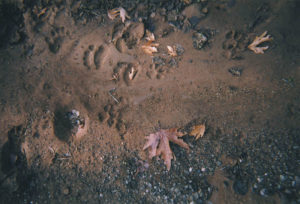Bivalvia: Mammals Order: Carnivores, Family: Arktides
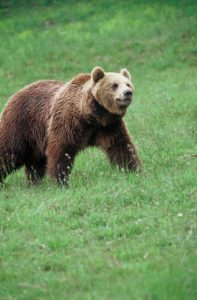
The bear is the largest terrestrial mammal in Europe. It lives 20 to 25 years, is a highly intelligent and agile animal, a symbol of strength, wild beauty and solitude. Its body is covered by dense brown, waterproof coat and has a triangular head, small eyes and ears.Its tail is small. If you are lucky enough to come across a bear, keep cool and enjoy this unique moment!
Did you know that:
The nest of a female bear can be used, after minor repairs, for several generations of females!
The bear walks simultaneously lifting both legs of the same side on every step!
The bear can develop a speed of up to 60 km per hour!
It is a protected species. If you find a wounded animal please inform immediately the appropriate authorities.
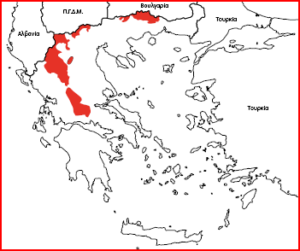 Although in the past the brown bear lived almost throughout mainland Greece, its spread nowadays has been reduced to two geographically distinct areas. The most significant populations are located in the mountains of western Rhodopes and Northern & Central Pindos.
Although in the past the brown bear lived almost throughout mainland Greece, its spread nowadays has been reduced to two geographically distinct areas. The most significant populations are located in the mountains of western Rhodopes and Northern & Central Pindos.
The bear is a solitary animal and released at dawn, dusk and night.
The height of an adult male on the cervix can reach 1.10m, with the total length from the tip of the snout to the very small tail ranging from 1.70 – 2.20m. Once standing upright on its both feet, its height reaches up to 2 meters.
The weight of an adult female ranges from 70-150 kilos, the while adult male is usually more husky and weighs between 110-280 kilos.
The bear has a highly developed sense of hearing and smell. On the contrary, its vision is less developed, being able to see well enough within 80 meters but it can not distinguish a human in 300 meters’ distance.
 Habitat
HabitatCharacteristic habitats that are preferred by the brown bear are mixed coniferous forests (pine, fir) and deciduous (beech, oak) located in the altitude zone between 900 and 1700 meters. During summertime, bears can be found in crops and orchards.
The bear is an omnivorous animal and preferably feeds on fruits of the forest such as blackberries, damsons, cherries, apples, pears, wild rose fruits, wild strawberries, acorns, beech nuts, and bulbs, roots and grasses. Of course, it loves honey! and supplements its diet with small and large mammals, insects (mainly ants) and other small animals, as large amounts of food are required to maintain the body volume.
The mating season (mid-May to mid-July) is the only social phase in the behaviour of the bear. During this period the males are able to travel long distances (in the order of tens to hundreds of kilometers) to search for a female companion in estrus. Females are able to reproduce from the age of 4-5 years and the total period of fertility does not exceed 15-20 years.
The female gives birth, inside a specially arranged nest, to one or two and occasionally three cubs, every 2-3 years, in the middle of winter (January – February) and while in a state of winter sleep. Newborns weigh only 300-400 g. They are naked and blind.
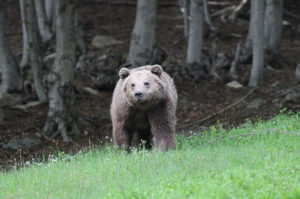 Legal protection status:
Legal protection status:The brown bear is a fully protected species under national law [Article 258, para. 2e and 2g (SW 86/69) Forest Code] and included as a priority species in Annexes II and IV of the Habitats Directive (92 / 43 / EEC). Also, included in Annex II of the Bern Convention as a species under strict protection, while its trade and trade departments are forbidden under the CITES Convention. In Greece about 30% of its distribution area is included in protected areas (National Parks).
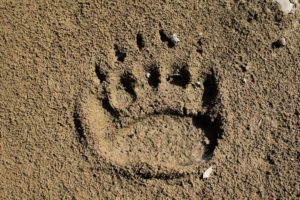 What to do if you encounter a meeting with a bear:
What to do if you encounter a meeting with a bear: